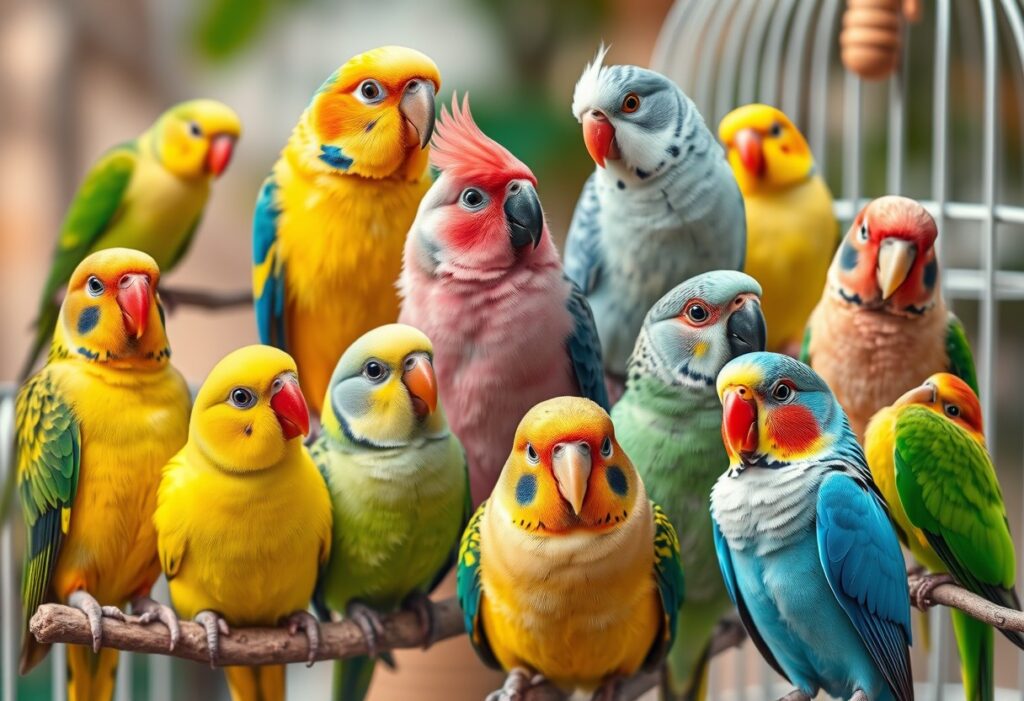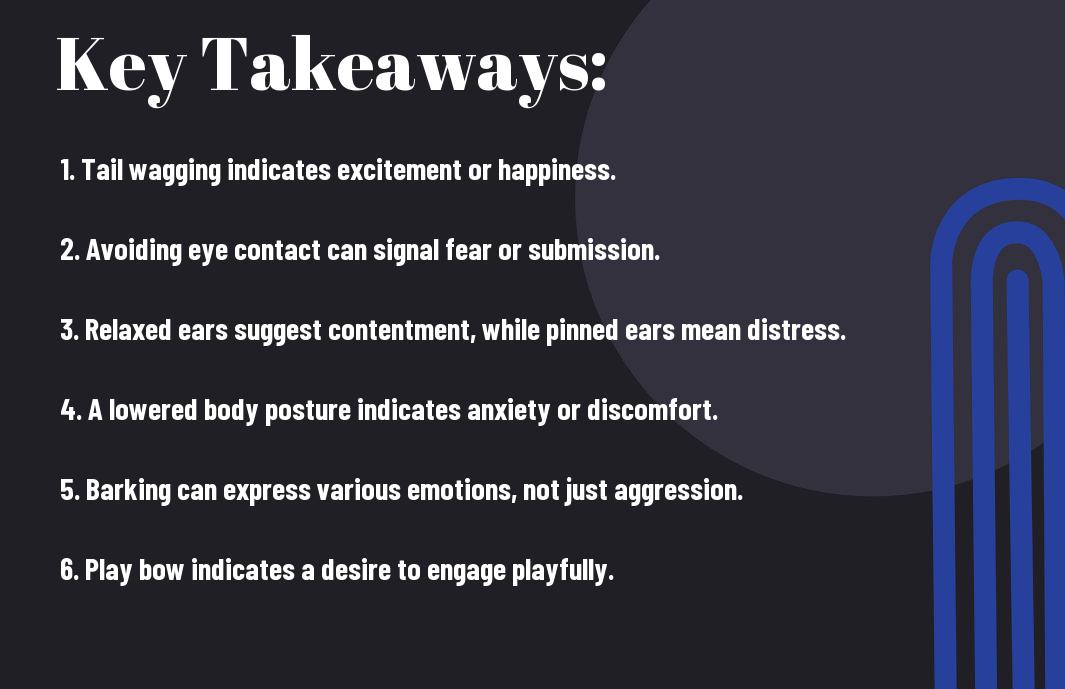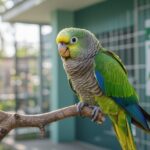Behavior can often challenge bird owners when dealing with aggressive birds. Whether it’s a parrot defending its territory or a finch feeling threatened, understanding their body language and triggers is crucial. In this guide, you’ll learn effective strategies to manage this dangerous behavior while fostering a safe environment for both you and your feathered friend. By implementing positive reinforcement and recognizing the signs of aggression, you can transform your experience and enjoy a stronger, more respectful relationship with your bird.
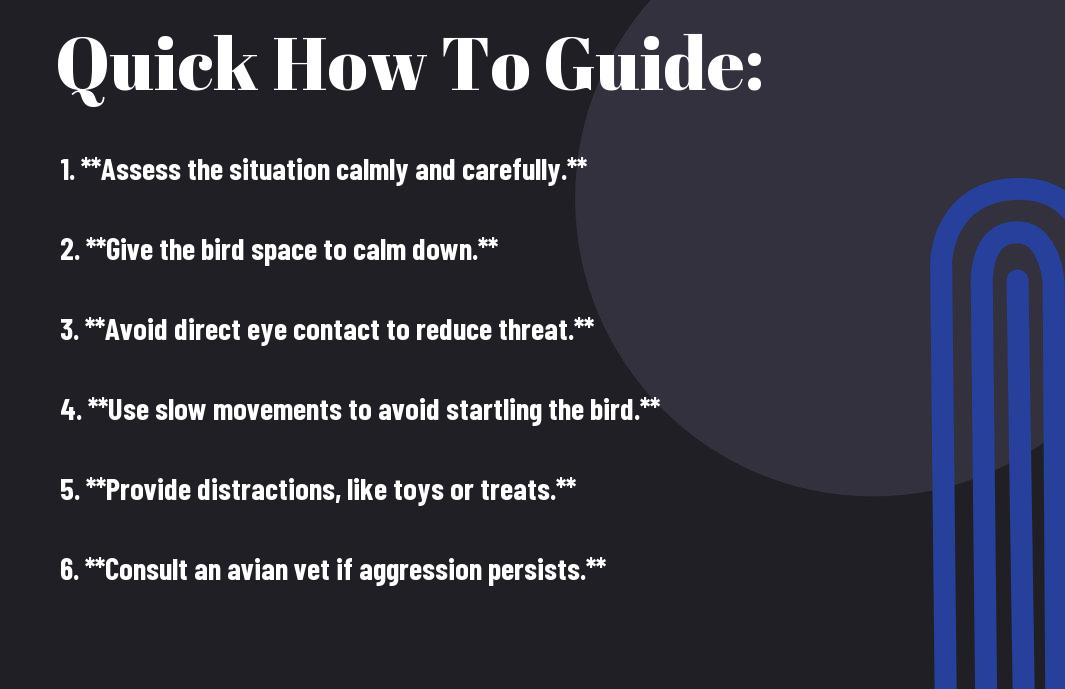
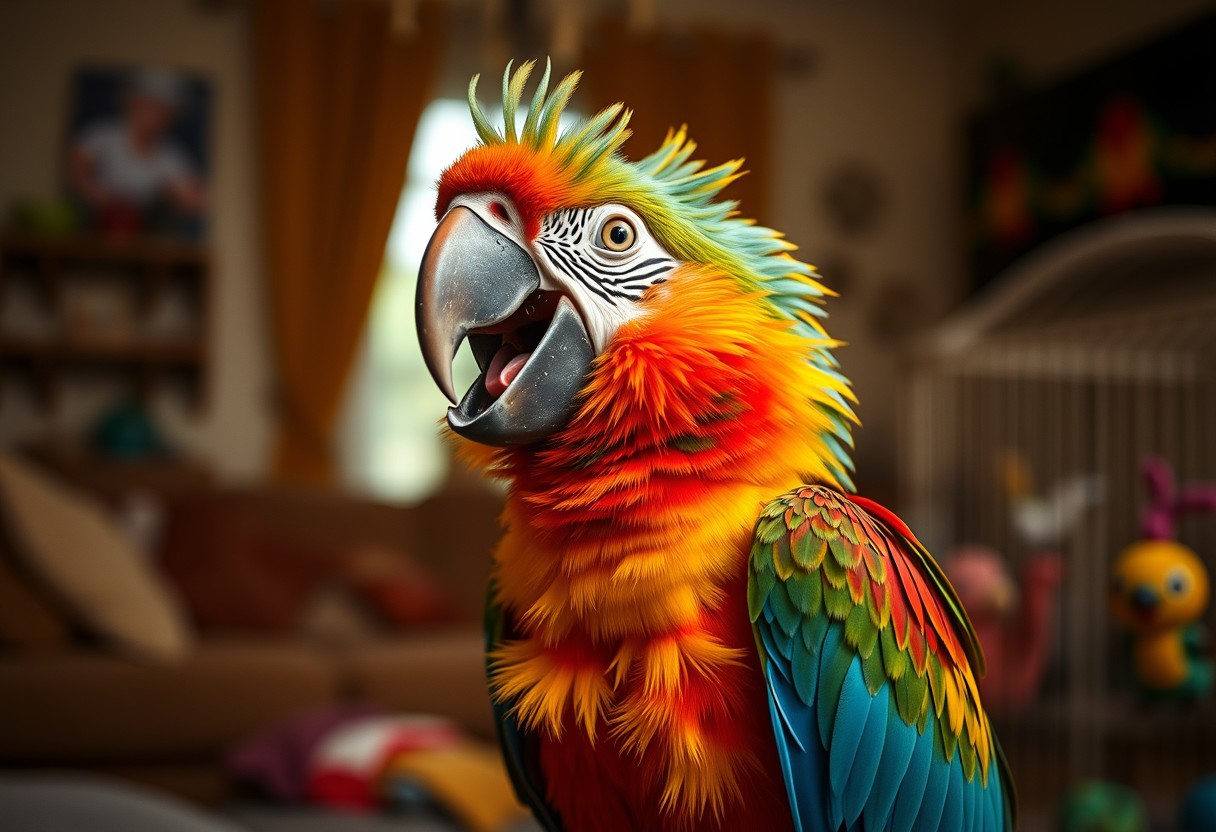
Understanding Aggressive Bird Behavior
Your first step in managing aggressive bird behavior is to understand the underlying reasons for this conduct. Birds, like many animals, exhibit aggression as a way of communicating their needs or discomfort. By recognizing the factors contributing to their aggression, you can begin to address the issue more effectively. This understanding can pave the way for a healthier relationship between you and your feathered friend.
Common Causes of Aggression
Little do many bird owners know that aggression can stem from various sources. A primary cause often includes territoriality, where birds feel the need to protect their space from perceived threats, including other pets or even humans. Additionally, stressors such as changes in environment, new pets, or loud noises can trigger aggressive behavior. Understanding these common patterns will help you alleviate the issues effectively.
Factors Influencing Bird Responses
Aggressive behavior in birds can also be influenced by a variety of external factors. For instance, your bird’s age and species play a crucial role, as some breeds are naturally more possessive or aggressive than others. Another significant factor is socialization; birds that have not been properly socialized during their formative stages may display heightened aggression towards humans or other animals. It’s crucial to recognize these influences in order to adjust your approach accordingly.
- Age
- Species
- Socialization
The way you respond to your bird’s aggression can either exacerbate or mitigate the behavior. Understanding their body language and vocalizations can provide insight into their potential triggers, allowing you to adapt your interactions accordingly. Moreover, a consistent routine can help instill a sense of security, making your bird less likely to react aggressively.
- Body language
- Vocalizations
- Routine
Plus, it’s crucial to recognize that unexpected situations can lead to a sudden increase in aggressive behavior. For example, if a new pet enters the household or if your bird encounters a stranger, it may result in heightened aggression. Observing your bird in different scenarios will provide you with a better understanding of what causes these responses. Plus, keeping your bird’s environment stable and predictable can help reduce instances of aggression in the long run. The key to successful management of aggressive bird behavior lies in your awareness and responsiveness to these crucial aspects.
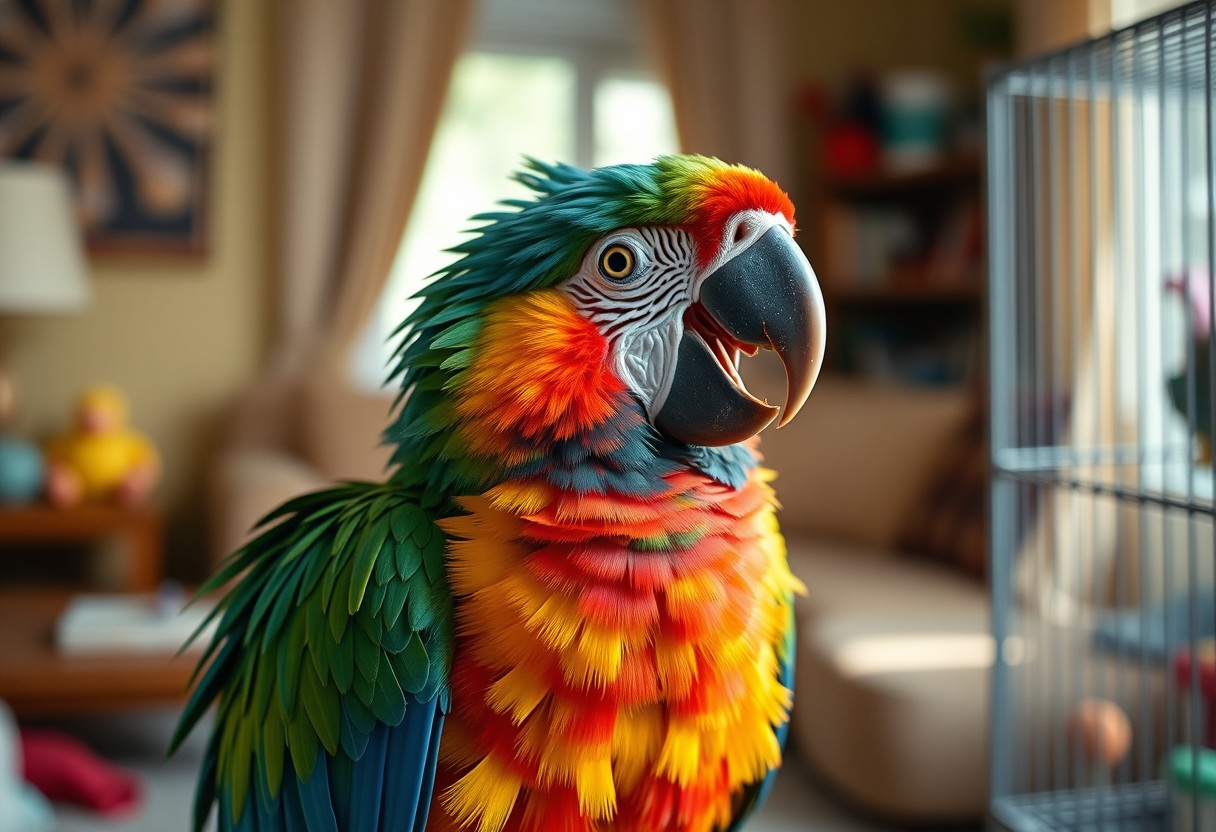
Tips for Preventing Aggressive Behavior
There’s no need to accept aggressive behavior from your bird as a standard part of pet ownership. Instead, you can take proactive steps to promote a calm and more positive atmosphere. Here are some vital tips to help prevent aggressive behavior:
- Provide a spacious and stimulating environment.
- Establish a consistent routine.
- Be mindful of your bird’s body language.
- Avoid sudden movements that may startle your bird.
- Limit exposure to stressors, such as loud noises or unfamiliar people.
The key to addressing aggressive behavior is understanding that prevention is often the most effective strategy.
Creating a Positive Environment
Now, it’s important to focus on creating a positive environment for your bird, as this can significantly reduce instances of aggression. Ensure that your bird’s living space is spacious enough for them to feel comfortable and secure. Incorporate various toys, perches, and enrichment activities that engage their natural instincts, minimizing boredom and frustration. A well-designed habitat can be the difference between a smooth interaction and an aggressive outburst.
Additionally, fostering a calm atmosphere by managing external stressors is crucial. You should provide consistent care and routines, as birds thrive on predictability. Spend time observing your bird’s behavior, and make adjustments as necessary to maintain a peaceful environment. This attentiveness can help you identify potential triggers that may lead to aggression.
Proper Handling Techniques
With proper handling techniques, you can minimize the risk of provoking your bird’s aggression. It’s vital to handle your bird gently and confidently, giving them a sense of safety and trust. Avoid grabbing your bird or forcing them into situations that may cause discomfort. Instead, use treat rewards to encourage them to come to you willingly. Always approach them from the side rather than head-on, which can be perceived as a threat in their world.
Preventing aggressive behavior begins with your approach, as the way you handle your bird directly impacts their comfort level. Pay attention to their responses; if they appear stressed or agitated, it’s a sign you should reassess your handling techniques. Always remain calm when interacting with your bird, as your energy plays a significant role in how they perceive the situation.
Socialization Strategies
Any bird, regardless of species, must be socialized properly to avoid developing aggressive tendencies. Begin socialization practices at a young age if possible, as this will help your bird become accustomed to various stimuli and interactions. Use positive reinforcement techniques, such as treats and praise, to create a favorable association with social experiences. Gradually introduce your bird to new people and environments to build their confidence.
Engagement with your bird should be ongoing. Spend quality time with them daily, allowing them to explore while also maintaining a sense of security. Assisting your pet in adjusting to new situations will not only strengthen your bond but also help prevent aggressive behaviors triggered by fear or anxiety. Don’t forget that patience is key; early stress can lead to long-lasting issues.
Another effective approach to socialization is to incorporate other pets gradually. This should be done cautiously and under supervision, ensuring that your bird feels safe throughout the process. Remember that exposure to different stimuli can help demystify the world around them, reducing fear and the tendency to react aggressively. By employing these socialization strategies, you can encourage a harmonious atmosphere between your bird, yourself, and other animals.
How to Address Aggressiveness When It Occurs
Many pet owners experience bouts of aggressive behavior from their birds at some point. Understanding how to effectively address this behavior is crucial to maintaining a harmonious household and ensuring the safety of both you and your feathered friend. Fortunately, there are several approaches you can take that will not only help manage aggression but also foster a stronger bond between you and your bird.
Calm Response Techniques
The first step in addressing aggressive behavior is to maintain a calm and composed demeanor. Birds are highly perceptive and can easily pick up on your emotions. By staying calm, you convey a sense of safety and stability, which can help diffuse any aggressive tendencies during an outburst. Try taking deep breaths or stepping back and observing from a distance when you feel your bird is becoming aggressive.
Additionally, avoid reacting to the aggression with loud voices or sudden movements, as this can further provoke your bird. Instead, focus on soothing expressions or soft words. This approach can help reinforce a positive environment where your bird feels less threatened, ultimately leading to a decrease in aggressive behavior.
Redirection Strategies
Response to aggressive behavior can also involve redirection. When your bird displays aggression, try to shift its focus onto a more positive activity. This could involve introducing a new toy or engaging it with a favorite treat. Not only does this distract your bird from its aggressive impulses, but it also encourages healthy behaviors that can replace aggression over time.
When you redirect your bird’s focus, ensure the alternative activity is engaging enough to capture its interest away from the aggression. This could include interactive play or training sessions that promote mental stimulation. By continuously employing redirection strategies, you can help your bird learn that aggression is not a necessary response to perceived threats, fostering a more peaceful living environment.
Training Methods
Response to aggressive behavior can also involve utilizing specific training methods. Positive reinforcement, such as treating your bird for non-aggressive behavior, can significantly reduce instances of aggression over time. Consistent training sessions will not only improve your communication with your pet but also allow them to associate good behavior with rewards.
With a dedicated approach to training methods, you will find that your bird gradually responds better to commands and begins to display fewer aggressive behaviors. These methods emphasize patience and consistency, crucial in shaping your bird’s behavior. By implementing structured training, you will create a supportive environment that nurtures trust, which in turn reduces the likelihood of aggressive behavior in the future.
Summing up
With this in mind, it is crucial to approach aggressive bird behavior with both caution and understanding. By recognizing the signs of aggression and establishing boundaries, you can create a safer environment for both yourself and the bird. Techniques such as not approaching the bird too closely, avoiding sudden movements, and using calming body language can significantly reduce the likelihood of aggressive displays. Furthermore, offering enrichment activities and proper socialization can also help mitigate aggressive tendencies over time. Keep in mind, your interaction reflects your understanding and respect for these creatures, which is crucial for harmonious cohabitation.
In addition, if you find the aggression persists despite your efforts, seeking advice from an avian veterinarian or a professional trainer may be necessary. These experts can provide tailored strategies that address the specific needs and behaviors of your bird. Ultimately, taking proactive steps to manage aggressive behavior not only enhances your relationship with your bird but also contributes to its overall well-being. By being informed and responsive, you hold the key to fostering a more peaceful and cooperative dynamic that benefits both you and your avian companion.
FAQ
Q: What are some common signs of aggressive behavior in birds?
A: Aggressive behavior in birds can manifest in several ways. Common signs include:
1. **Hissing or Growling**: Birds may make harsh vocalizations as a warning.
2. **Stance and Posture**: An aggressive bird may puff up its feathers, spread its wings, and hold its body upright, which makes it appear larger.
3. **Biting or Pecking**: If a bird lunges or attempts to bite when approached, it is signaling aggression.
4. **Screaming or Squawking**: Excessive vocalizations can indicate stress or aggression.
5. **Wing Flapping or Charging**: Birds may flap their wings aggressively or charge at perceived threats, including owners or other pets. Recognizing these signs early can help you manage the situation effectively.
Q: How can I prevent my bird from becoming aggressive?
A: Preventing aggressive behavior in birds largely revolves around proper socialization, training, and environment. Here are some strategies:
1. **Socialization**: Expose your bird to different people and environments from a young age to reduce fear and anxiety.
2. **Positive Reinforcement**: Use treats and praise to reward good behavior. Avoid punishing aggressive actions, as this can exacerbate fear and aggression.
3. **Provide Mental Stimulation**: Boredom can trigger aggression, so ensure your bird has a variety of toys, social interaction, and opportunities for play.
4. **Safe Space**: Make sure your bird has a safe retreat where it can feel secure when feeling threatened or anxious, such as a quiet area of its cage.
5. **Consistent Routine**: Establishing a consistent routine can help your bird feel more secure and less prone to aggression.
Q: What should I do if my bird displays aggressive behavior towards me?
A: If your bird displays aggressive behavior towards you, take the following steps to address the issue:
1. **Stay Calm**: Reacting with fear or frustration can escalate the situation. Remain calm and avoid sudden movements.
2. **Give Space**: If your bird feels threatened, it may be best to give it some space to cool down. Step back and allow the bird to calm itself.
3. **Observe Triggers**: Pay attention to what may be causing the aggression. Is it a specific person, sound, or change in the environment? Understanding triggers can help you manage the situation better.
4. **Gradual Approach**: Re-establish trust by gradually reintroducing yourself. Spend time near the bird’s cage without forcing interaction.
5. **Training**: Use desensitization techniques to help your bird feel comfortable around you again. Start by rewarding calm behavior and gradually work on building a positive relationship. If aggression persists, consider consulting a veterinarian or an avian behaviorist for further assistance.


